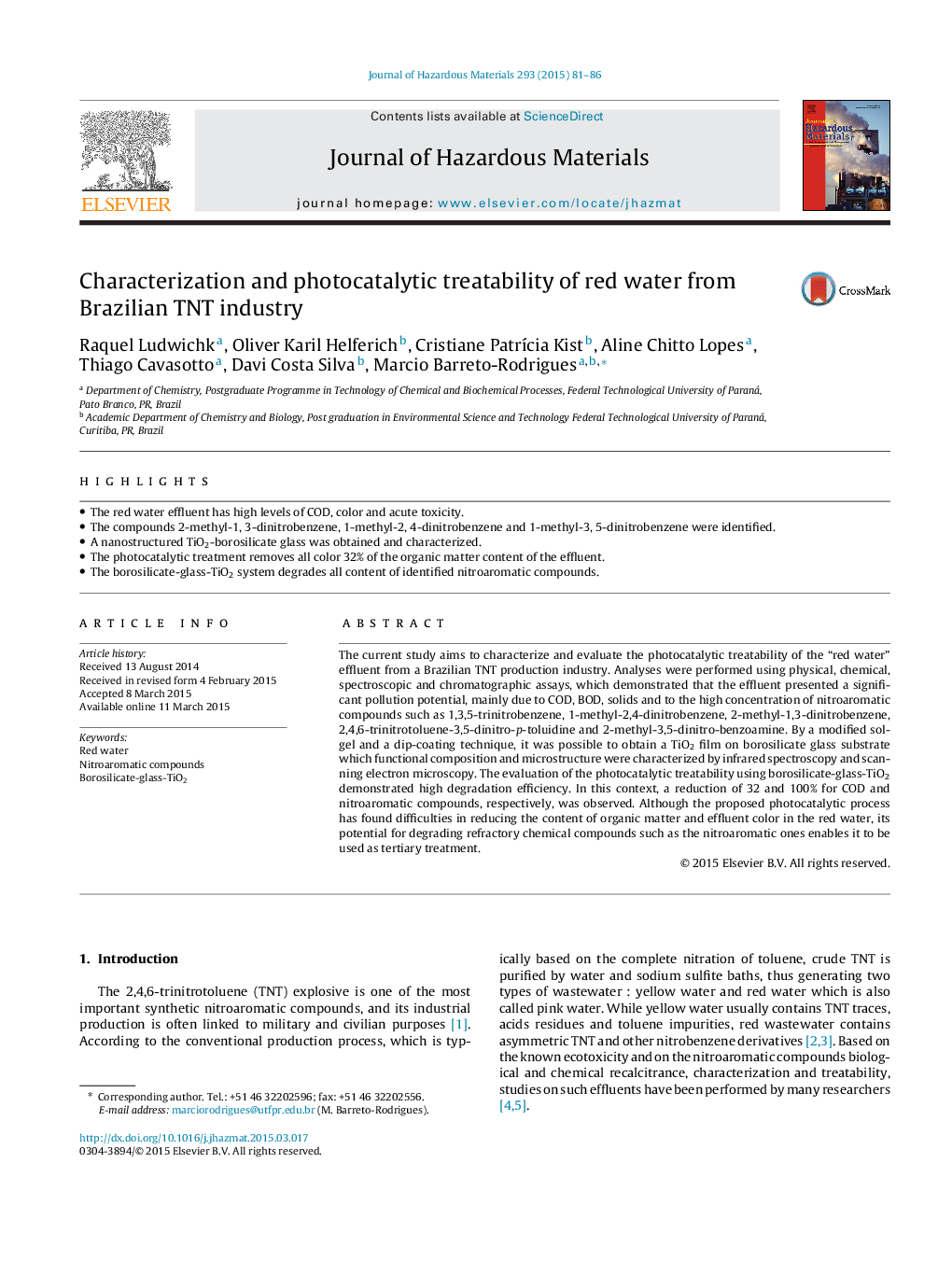| Article ID | Journal | Published Year | Pages | File Type |
|---|---|---|---|---|
| 576077 | Journal of Hazardous Materials | 2015 | 6 Pages |
Abstract
The current study aims to characterize and evaluate the photocatalytic treatability of the “red water” effluent from a Brazilian TNT production industry. Analyses were performed using physical, chemical, spectroscopic and chromatographic assays, which demonstrated that the effluent presented a significant pollution potential, mainly due to COD, BOD, solids and to the high concentration of nitroaromatic compounds such as 1,3,5-trinitrobenzene, 1-methyl-2,4-dinitrobenzene, 2-methyl-1,3-dinitrobenzene, 2,4,6-trinitrotoluene-3,5-dinitro-p-toluidine and 2-methyl-3,5-dinitro-benzoamine. By a modified sol-gel and a dip-coating technique, it was possible to obtain a TiO2 film on borosilicate glass substrate which functional composition and microstructure were characterized by infrared spectroscopy and scanning electron microscopy. The evaluation of the photocatalytic treatability using borosilicate-glass-TiO2 demonstrated high degradation efficiency. In this context, a reduction of 32 and 100% for COD and nitroaromatic compounds, respectively, was observed. Although the proposed photocatalytic process has found difficulties in reducing the content of organic matter and effluent color in the red water, its potential for degrading refractory chemical compounds such as the nitroaromatic ones enables it to be used as tertiary treatment.
Keywords
Related Topics
Physical Sciences and Engineering
Chemical Engineering
Chemical Health and Safety
Authors
Raquel Ludwichk, Oliver Karil Helferich, Cristiane PatrÃcia Kist, Aline Chitto Lopes, Thiago Cavasotto, Davi Costa Silva, Marcio Barreto-Rodrigues,
